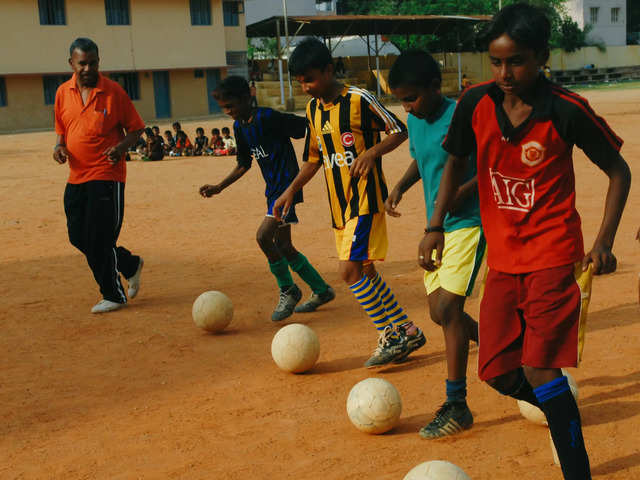
Representative imagePixabay
It aims to grow its network by 5X in 18-24 months
Oct 30, 2020, 10:00 IST
brands
Fitternity eyes to expand to 25 cities in India and be present in APAC and Middle east
- As the whole country became more health-conscious and ‘immunity’ became the talk of town after COVID, Indian health and fitness startup
Fitternity saw an uptick in its users and adoption rate. - We speak to Jayam Vora, Co-Founder & COO, Fitternity to discuss the impact of lockdown, trends in the
fitness industry , vision for the brand and marketing strategy.
However, isolation, fear of contagion and the uncertainty can be nerve-wracking for anyone. Fitness apps, therefore, started offering a holistic approach to health and help their users relieve stress by organising counselling sessions with mental health experts, nutritionists, spiritual trainers as well. COVID redefined fitness in our country and pushed organisations to become more wellness-oriented.
With the increasing rate of digital adoption, Indian health and fitness startup Fitternity saw its new users and customer acquisition grow by 150% in quarter Apr-Jun vs. Jan-Mar. It also empowered 4000+ fitness studios and trainers to go online.
As gyms and studios reopen and users resume working out at physical centres, Fitternity is also expecting a large surge in consumption of users wanting to access physical infrastructure, while having an option of virtual fitness training. It has already adopted a hybrid model, where on-ground fitness centers are acting as its subsidiary.
Fitternity claims to be the largest fitness discovery and booking platform with over 11.3 million+ unique users across a network of 12,000 gyms, studios, fitness centres, hotels, and swimming pool facilities among others.
We caught up with Jayam Vora, Co-Founder & COO, Fitternity to understand the impact of lockdown, trends in the fitness industry, vision for the brand and marketing strategy.
Excerpts:
Q. How was the lockdown period for the organization? What has your strategy been to minimize the impact as an organization?
We have always been a digitally-led company that worked towards understanding the pulse of the consumers and catering to their fitness and wellness needs. Fitternity’s network of gyms and studios is spread across 12+ Indian cities. We had been working on expanding our offerings into a virtual domain to cater to customers in cities that we were not present in. Since lockdown, we accelerated the launch of our virtual offerings to ensure users don’t miss out on their fitness needs. Here is how we changed our strategy:
Consumers:
Having had a strong digital presence and a good user base of +11.3M users, we harnessed our technological strength and expertise and developed these digital products over the first month of the lockdown: Interactive Online Sessions, FitTV- Video On Demand, Personal Training, OnePass Virtual, 30 Day Fitness Challenge, Nutrition & Mental Wellness Consultation Sessions
Partner gyms and fitness facilities:
We presented a tech-enabled platform to gyms/studios to continue their services to the consumers virtually. This also helped them in sustaining their businesses. Post the re-opening of gyms and fitness facilities, we are helping them comply with the government SOPs and helping smoothen the process in safely re-opening.
Corporates Companies:
While we have been working with over 75+ corporates as a part of our Fit@Work corporate initiative allowing companies creative solutions to manage employee wellbeing & fitness like our OnePass Corporate Membership Plan. In the post-lockdown phase, we scaled our corporate integration from 50 to 200+ corporates and customised these solutions and introduced Corporate Live fitness & wellness sessions, virtual plans enabling employees to have virtual access to gyms and fitness studios in India.
Q. Fitternity was growing by 3X before the lockdown. How did COVID impact your business? What kind of spike in users did you witness?
Our primary business model was such that helped users easily access services provided by the physical gyms and fitness centres. However, during the pandemic, based on our observation of the growing consumer demand for fitness and wellness services, we evolved our services on to the digital platform and empowered 4000+ fitness studios and trainers to go online. Through our new virtual offerings, we were able to extend our services to various demographics and provided flexibility to users to access a variety of workout options and guidance provided by industry experts and trainers.
Over the past few months, our new users and customer acquisition grew by 150% in quarter Apr-Jun vs. Jan-Mar showing influx of new users into the ecosystem- Over 50,000 new users. We witnessed an average of 7/10 users praising their interaction with the trainers on livestream sessions and narrating how it made their experience very similar to taking an actual physical class. Over 85% of users have expressed heartfelt appreciation towards our virtual offerings.
Also, we witnessed a spike in the demand for Corporate Wellness services with a 300% increase in inbound enquiries with a doubling conversion rate to on-board corporates for their corporate well-being programme.
Q. With the reopening of fitness centres, you also tied-up with a few gyms across metro cities. Tell us a bit about this partnership and what does it entail? How has the hybrid model panned out for you so far?
As a platform, we enable user physical access to gyms and fitness and centres across a partner network of 12,000+ studios and trainers. Fitternity being a managed marketplace, our relationship with fitness centres is that of a partner and revenue generator and we enable real-time bookings for consumers and corporate users.
We realise that even with the advent of digital services, physical ways of accessing fitness and wellness services will not go out of fashion. It is essential to understand that while reopening of gyms and fitness centres in India, people will take a while to adjust to the new normal. Although a positive approach is being seen on both ends- business owners and consumers, a large part of the consumer segment prefers to workout from home for the convenience and flexibility that it provides. Hence, paving way for both physical and virtual fitness services to co-exist.
Post reopening, we have been working closely with partner gyms and studios to create a safe environment for the consumers to workout in and build a sustainable standing as India re-opens. We are working with and ensuring the implementation of the Government mandated safety SOPs with our gyms/studio partners. Fitternity users can see and understand these mandated SOPS on Fitternity’s website/App and social media. We have also introduced an integrated CRM dashboard for capacity mapping and inventory management.
Q. Speaking from a marketing perspective, how different was your strategy during the lockdown? How has your media plan changed? Will we see you investing in OOH, TV, radio, or any other traditional medium on a large-scale anytime soon?
In the recent months, the industry patterns and behaviour of the consumer towards content consumption has led to a shift in brand messaging - earlier creating content that generated aspirational value to now creating content that is more utility and necessity based.
Our marketing strategy since the onset of the pandemic has been more focused on social media over OOH, TV, radio and other traditional marketing channels. To keep our online offerings relevant and market them effectively, we have been providing snackable fitness and wellness content on various brand communication platforms such as Instagram, Facebook, E-mailers, Articles and more. We have always strived to create innovative and quality content that adds value to our followers/users by working on creating awareness with our strong base of like-minded influencers and social media.
Q. How has COVID-19 changed the fitness industry? Have you witnessed any interesting consumer behavior trends during the lockdown and post?
Due to the onslaught of COVID-19, there has been an increase of people wanting to build immunity. If we were to observe the change in the fitness industry, it can be viewed through multiple aspects. For instance, the consumer segment has expanded beyond just fitness and is more inclined towards gaining information on exercises that help in building immunity and understanding the nutritional value of the food that they consume. There has also been an upsurge in the number of times a user works out during a week. For instance, earlier, it was observed that a user would workout 4 times a month but the number has now increased to 3-4 times a week, which is a positive sign towards inculcating fitness in their daily routine. Personal training and coaching has garnered more attention over the last few months as people are seeking guidance while working-out from home. Consumers are also more aware about the importance of mental health and holistic wellness and are seeking ways in which they achieve this along with physical fitness.
So it is fair to say that building immunity has become a core driving force for consumers to workout and hence achieve a healthy-wellbeing.
Q. How big is the fitness industry right now? How do you predict it will grow in the post-COVID world? What part of the market share are you aiming for?
If we were to observe the current consumer behaviour pattern, we can predict the future to have a more conscious consumer and newer set of users for whom the industry would have to come up with unique kinds of business models and fitness services. Physical and virtual ways of accessing fitness will co-exist. Earlier, the kind of advancements that would happen in the fitness industry over a span of 10 years, is now happening at a much faster pace and hence being made available for the consumer in a span of just a few years.
From a market share stand-point, as gyms and studios reopen and users resume working out at physical centres, we are expecting a large surge in consumption. As an aggregator and marketplace, we are aiming to get to a market share where we impact 30% of total fitness services being consumed in the country.
Q. In the post-COVID world, do you expect AR/VR/virtual training to become an even more important tool in the entire consumer journey when it comes to fitness? Are you already investing in technology?
As the importance of digital is increasing, more companies are investing in technology and new introductions to the market, to which the consumers have been very accepting of. It is a two way effort -- wherein the consumer is also open to try out different technologically advanced products/services and companies are also investing in these efforts.
This is being witnessed not just in India but also globally. However, it won't take away from the physical aspect of the business, but in fact make both technologically advanced digital services and physical services a robust way of working-out. Also, since fitness is an action based activity, AR/VR tools work well to present consumers an experience more engaging and interactive. Being a digitally led company, we have also invested in technological tools that help and contribute towards presenting our users with a seamless workout experience.
Q. What is your vision for Fitternity this year?
Our vision for Fitternity is to enable consumers to have access to fitness and wellness services in an easy, cost-effective and convenient manner. We are currently operational in 12+ cities and aim to expand this across 25 cities in India and in APAC and Middle east. Our aim is to expand our current network of gyms, studios, fitness centres, hotels, and swimming pool facilities among others from 12,000 to 45,000 and 5X growth in 18-24 months.
Q. What are your broad marketing plans for the rest of the year? What will your area of focus be?
Our focus has always been to guide our users and partners with relevant information. With the re-opening phase already set in motion, our marketing plan for the rest of the year is focussed towards helping users adapt to the hybrid business model of accessing fitness. While we are constantly innovating and improving our digital services, we are also working towards re-establishing consumer belief and trust in physical gyms and fitness centres. We are also focussing towards presenting a more holistic health and wellness service to our consumers and providing seamless access towards the same.
Q. As a brand, what has been your biggest learnings from the Covid-19 experience?
Our biggest learning was affirmed from this experience, that fitness is not restricted to a - ‘One Size Fits All’ approach. There has to be variants that cater to various needs of the consumers. Unprecedented times like these have brought in learnings that have impacted how society and businesses function as a whole. It has reinstated our belief in constant innovation and our zeal to create services that are focussed towards catering to the diverse needs of the consumers.
The pandemic has also helped us be resilient and vigilant for any adversities in times like these. It has helped in gathering an understanding of ‘new normal’ of the industry and the consumer approach to the same.
INSIDER INTELLIGENCE REPORTS







